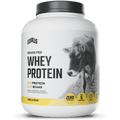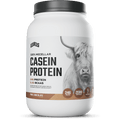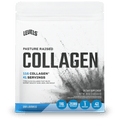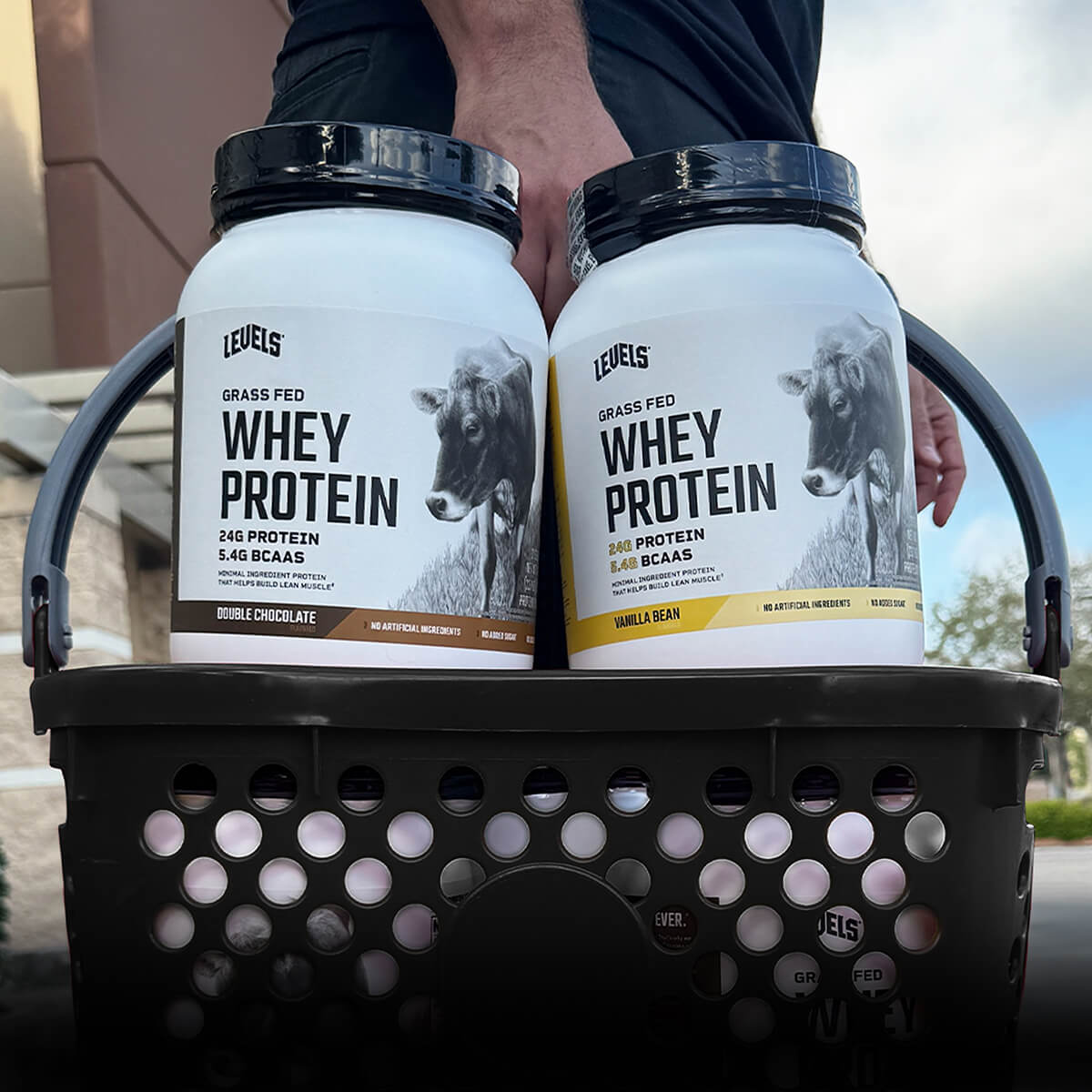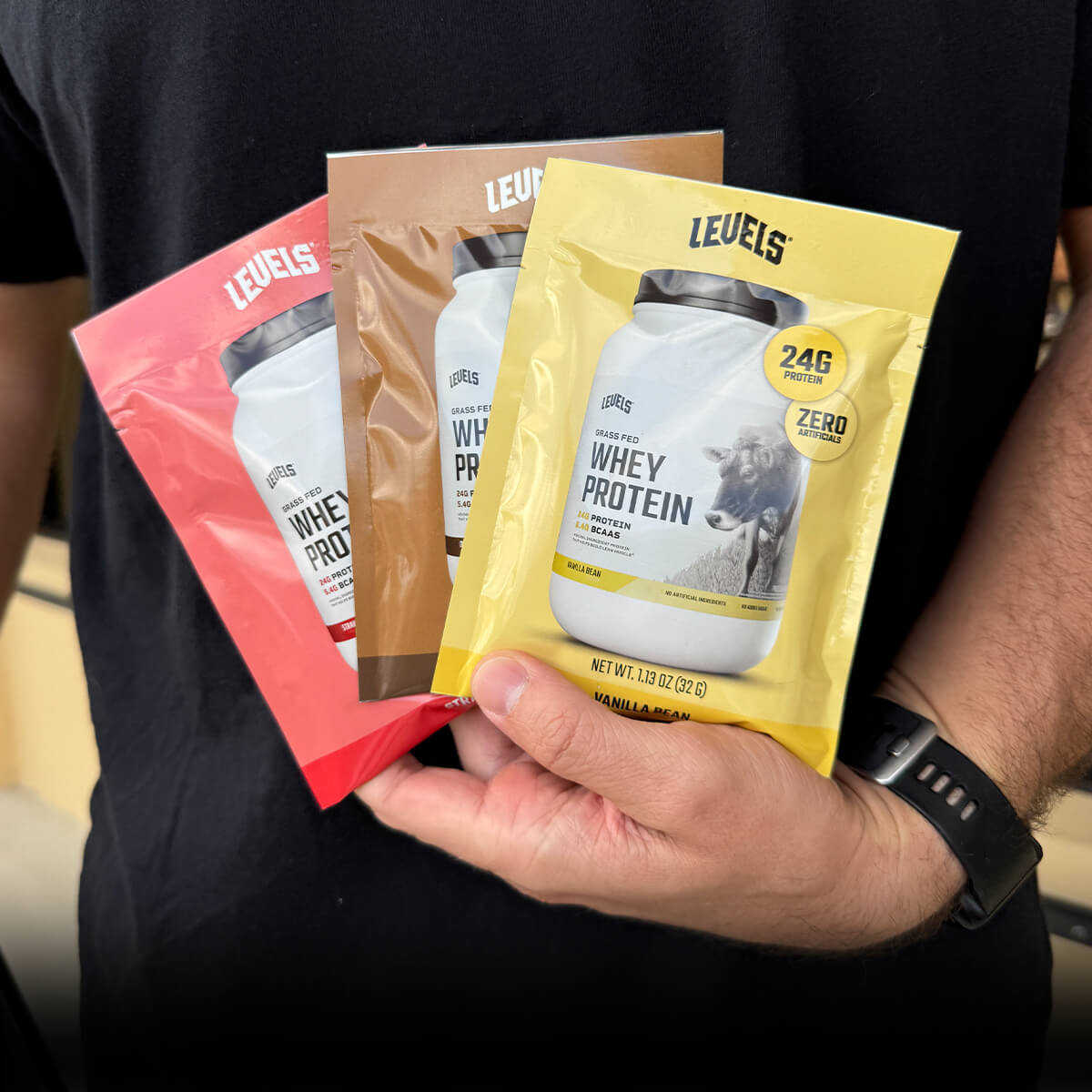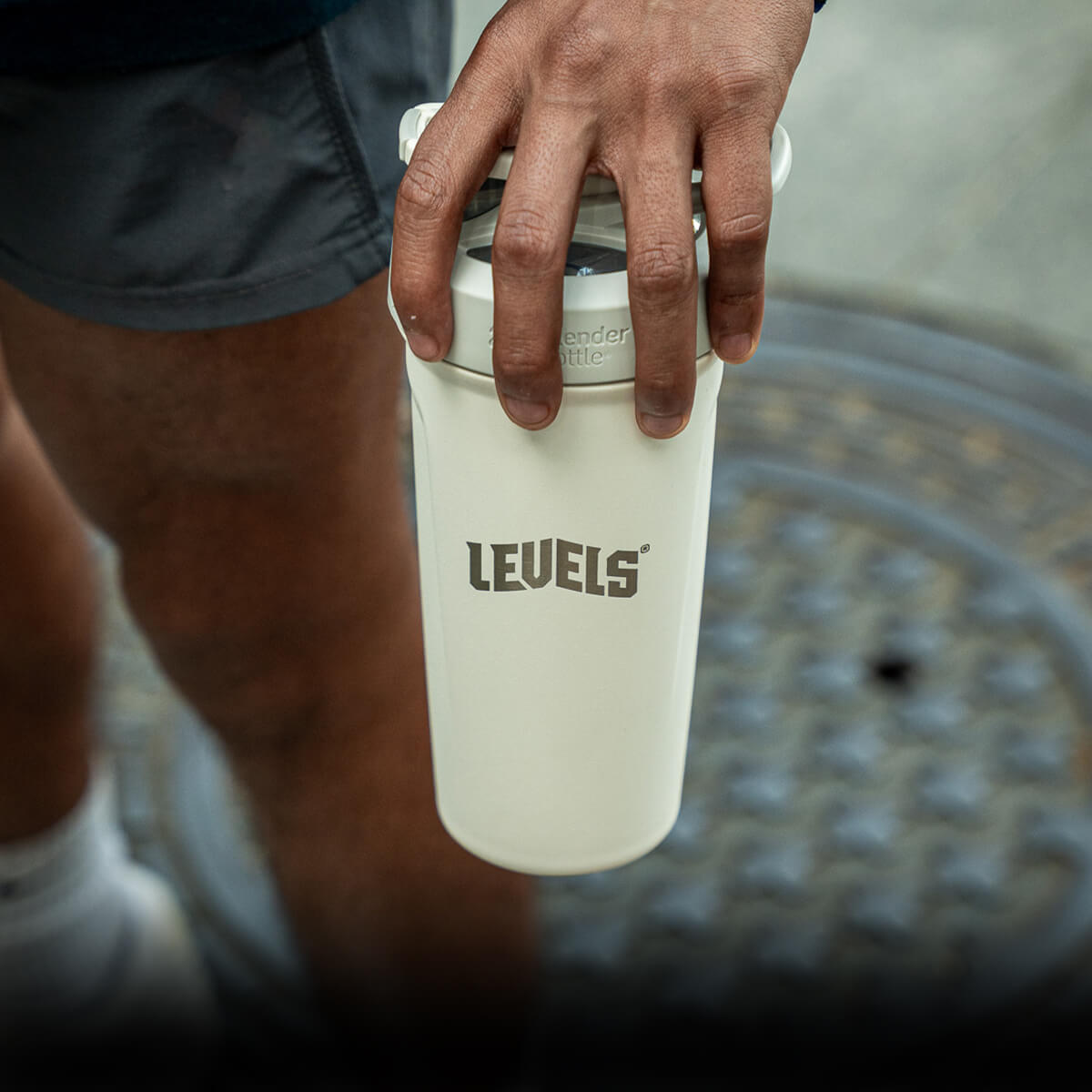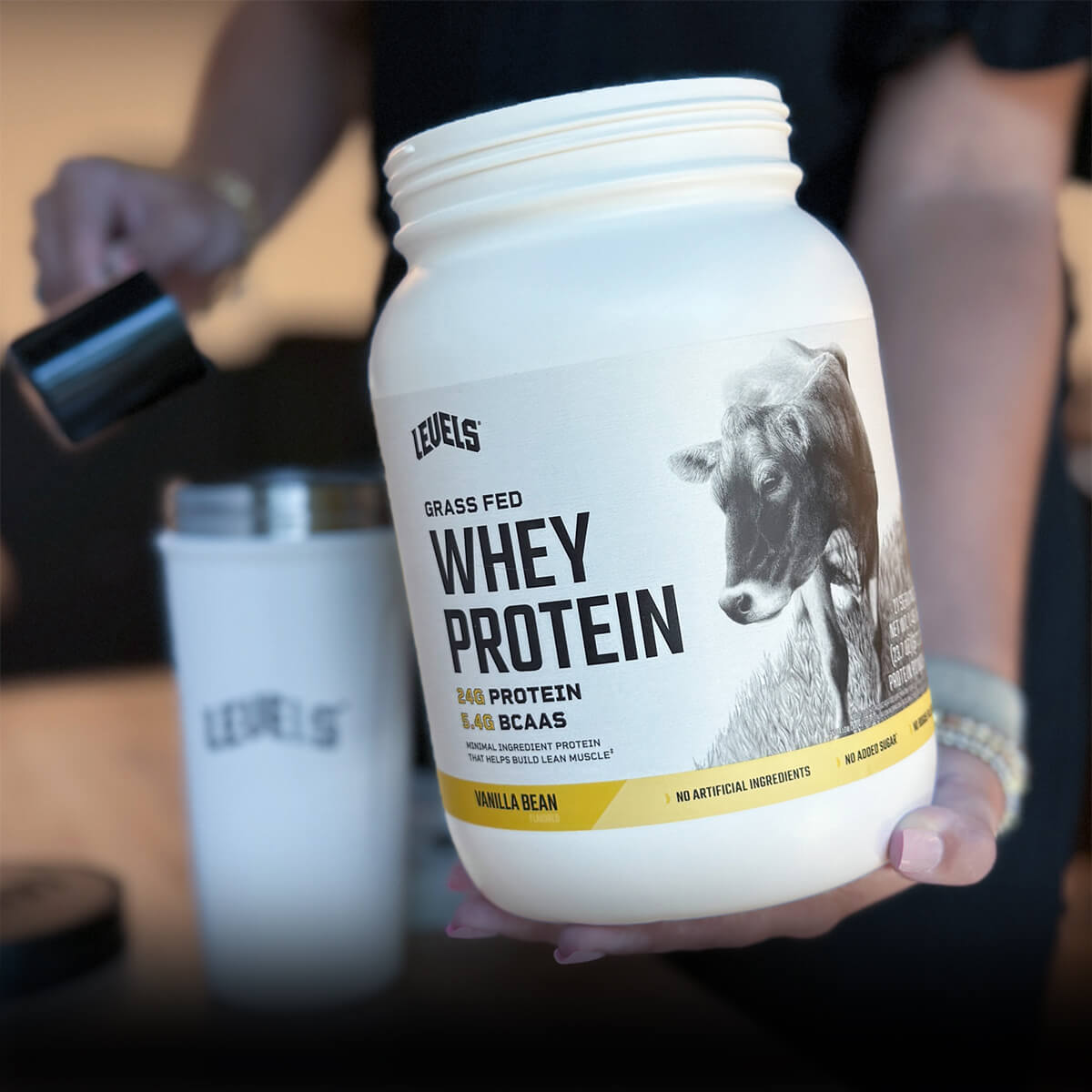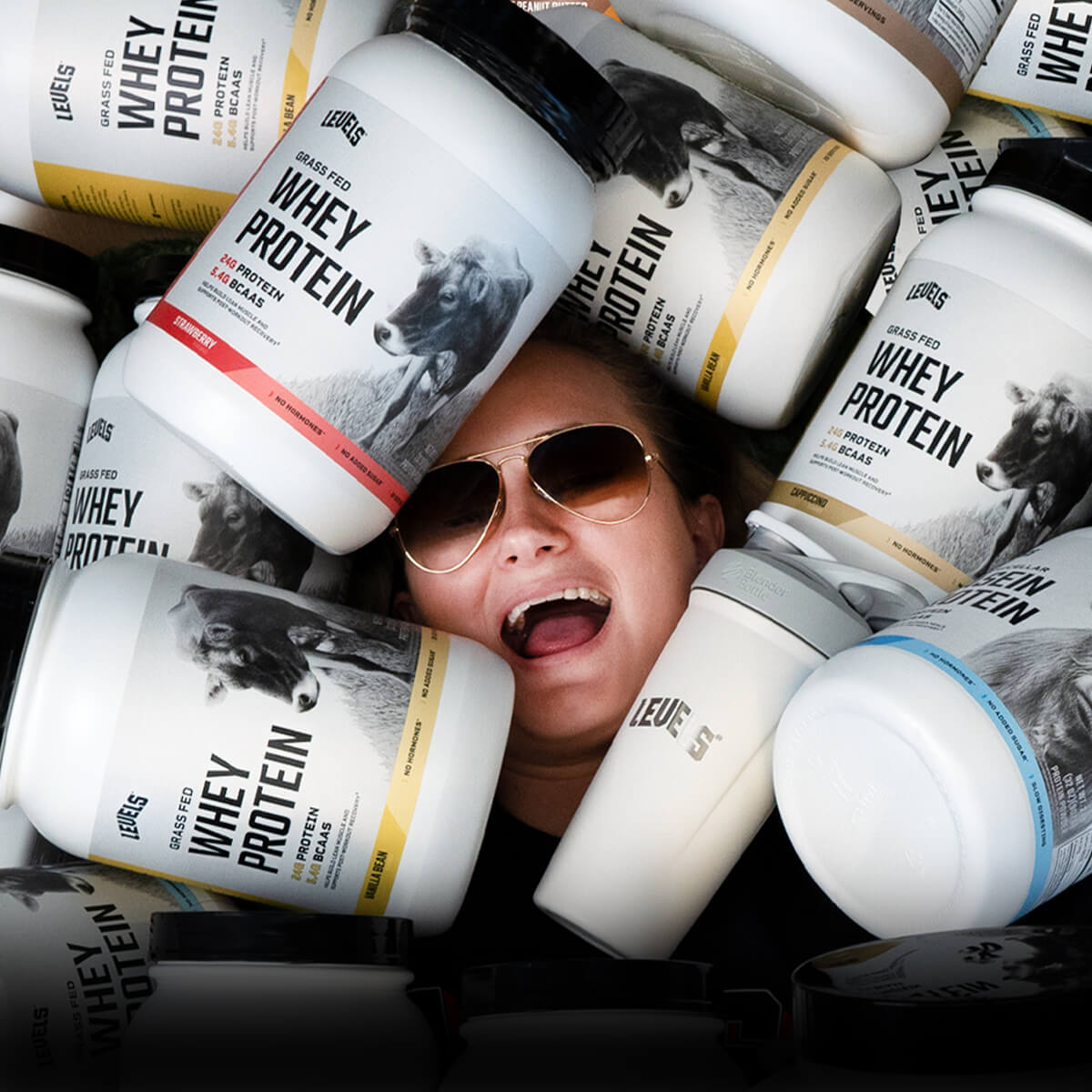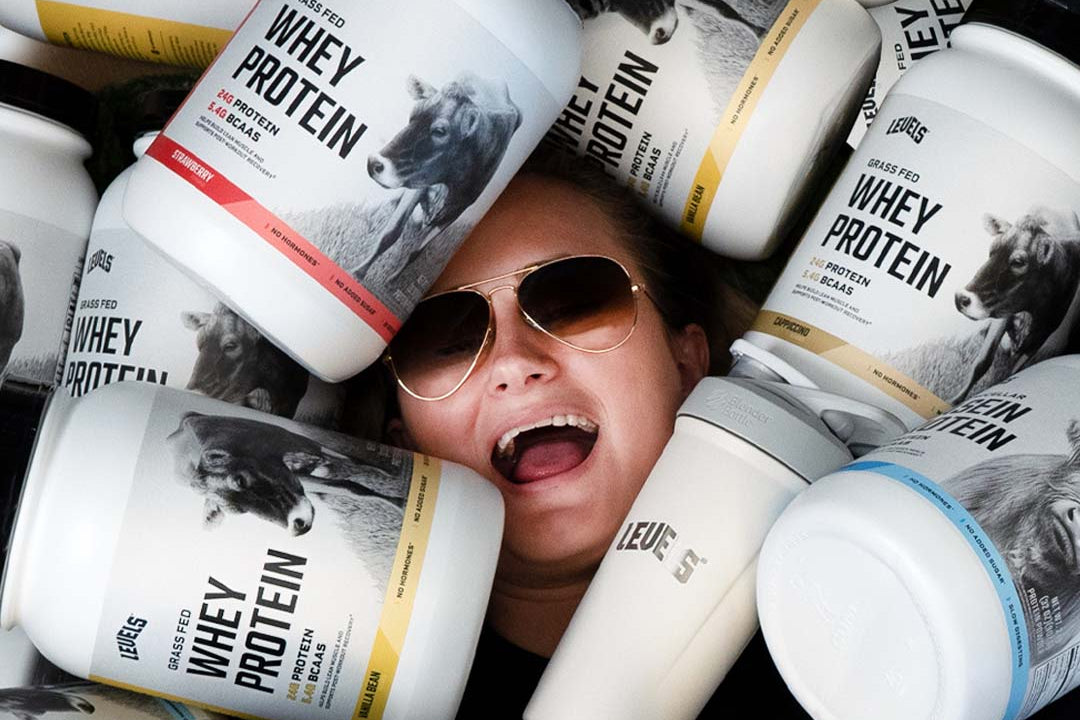In the weight room, every single variable makes a difference. You already know the obvious examples: your exercise selection, loading, sets, and reps.
But when was the last time you took a close look at your rest periods between sets? Do you know the difference between 1 minute versus 3 minutes...or are you “winging it” with random or untimed rest periods?
In this article, you’ll learn about the pros and cons of different rest period durations, 3 time-saving tips and tricks, and how to choose correctly for your goals.
But first, to better understand why rest periods matter in the first place, we’ll begin with a short lesson on energy systems.
Your Body’s Energy Systems and What They Do
Your energy systems are metabolic processes that fuel your cells with the energy needed to lift weights or perform other activities.
And the type of activity, duration, and intensity all help to determine which energy systems your body uses during exercise.

Additionally, each of the 3 primary energy systems requires a specific amount of time to recover, which is one reason why rest periods are an essential consideration for your fitness results.
Keep reading to learn how each energy system relates to various fitness qualities, plus other helpful insights!
The ATP-CP System
The adenosine triphosphate-creatine phosphate energy system (ATP-CP for short) fuels short, powerful bursts of movement lasting 10 seconds or less[*].
Essentially, ATP-CP generates the majority of the energy your body uses for high-intensity but short-lived activities — like sprinting 100 meters or a max-effort set in the gym.
And even as your muscles break down ATP during all-out efforts, a related energy molecule called phosphocreatine also helps create more high-energy ATP.
According to research, your body requires approximately 3-5 minutes of rest to fully regenerate ATP after an all-out explosive effort[*].
The Glycolytic-Lactate System
If you don’t rest after 10-15 seconds of exercise, but instead continue your activity, the ATP-CP system is no longer the main contributor of energy.
Instead, the glycolytic-lactate energy system takes over. And for activities lasting up to 75 seconds, it’s the primary source of energy for your muscles[*].
Glycolytic means that this energy system relies on glycolysis — the use of glucose, a simple sugar, for fuel. It can come from your blood glucose (blood sugar) or from sugar stored in your muscles, called glycogen.
And when your muscles use glucose for energy, they create lactate in your bloodstream, which your muscles can also use as fuel, and which your liver recycles back into glucose to reuse as fuel[*].
It’s also associated with “the burn” you probably know from prolonged, intense exercise (and either love or hate). However, hydrogen ions your body produces while using carbs for energy are the reason for the burn, not “lactic acid” as you may have heard.[*].
Eventually, the hydrogen ion buildup makes your muscles acidic, which limits the energy your glycolytic-lactate system can contribute[*].
After you exhaust your glycolytic-lactate system, your body requires 6-8 minutes of rest to make a full recovery[*].
The Aerobic-Oxidative System
Your aerobic-oxidative energy system is the longest-lasting, lowest-power-output energy system — as well as the only one that can use fat for fuel.
Although your aerobic energy system contributes energy from the start of any activity, the ATP-CP and glycolytic-lactate system contribute most of the energy until after the 75-second mark[*].
At 75 seconds of sustained activity, your aerobic system is contributing half of the energy required, and by 3 minutes, the other systems are providing very little energy by comparison.
What the aerobic-oxidative energy system lacks in power, it makes up for in sheer endurance. It can power activity for an astounding 120 hours with no rest[*].
How Long Should You Rest Between Weight Training Sets?
Keep in mind that weight training is the best way to build strength, power, size, and muscular endurance.
And the most important energy system in weight training is ATP-CP, followed by the glycolytic-lactate system.
But think about it — how often does a single set last 30-75 seconds or longer?
Therefore, lifting isn’t the ideal method for maximizing glycolytic-lactate fitness or aerobic-oxidative fitness.
If you want to build those fitness qualities efficiently, you need to use activities like repeated sprints, interval training, and steady-state cardio (especially fasted cardio).
And now that you understand how each energy system contributes to your lifting performance, let’s take a look at what studies say about rest period duration.
Rest Periods for Strength and Power
Generating maximum strength and power requires neural efficiency (also called neural drive — the recruitment of muscle fibers by your central nervous system) as well as contribution from the ATP-CP system[*].
And according to a scientific review published in the journal Sports Medicine, rest periods of 3-5 minutes result in higher power output, better strength performance, and better strength gains compared to shorter rest periods[*].

In other words, if you don’t rest long enough, you’re cheating yourself out of strength gains because your muscles won’t perform at their full capacity.
Therefore, if your goal is to get as strong as possible, you should rest 3-5 minutes between heavy sets of compound lifts. Most of the time, 3 minutes should be sufficient.
Rest Periods for Size (Hypertrophy)
If you want to get bigger, your performance in the weight room is an essential consideration.
And according to a 2016 study published in the Journal of Strength and Conditioning Research, longer (3 minute) rest periods resulted in more strength and size gains compared to shorter (1 minute) rest periods [*].
Similarly, a separate 2016 study concluded that the most growth occurred when people used rest periods of 3-5 minutes for heavy, compound lifts, with 2 minutes rest on lighter, single-joint movements, compared to shorter rest periods[*].
However, loading, performance, and strength gains are not the only factors that count for hypertrophy.
Other variables such as muscle fiber breakdown, blood flow, anabolic hormones (like testosterone and growth hormone), and metabolic stress (the demand you put on a muscle during weight training) also affect muscular growth.
And some research suggests that rest periods of 30-90 seconds may result in higher levels of metabolic stress, as well as more growth hormone release[*][*].
As a result, your best bet for hypertrophy is to experiment with various rest periods, change them up over time, or use a mix.
Rest Periods for Endurance
As we’ve already discussed, weight training isn’t the most effective way to train your glycolytic-lactate or aerobic-oxidative energy system — for that, you need to use cardio.
However, you can improve one aspect of endurance fitness, muscular endurance, using weights.
The main benefit of muscular endurance training is that it can make your muscles more efficient at clearing hydrogen ions that make muscles acidic, thus enhancing your recovery speed and glycolytic-lactate energy system performance.
To maximize muscular endurance, the American College of Sports Medicine (ACSM) recommends using 15 reps or more (enough to get a serious “burn”) with short rest periods of 90 seconds or less[*].

Which Rest Period Length Is Best? Plus 3 Time-Saving Tips
The optimal rest period length depends on what you want to achieve in the gym.
In truth, for pure strength and power, a 3-5 minute rest period is probably superior to any other duration.

But for hypertrophy or general fitness, you’ve got plenty of room to experiment, and what works best may vary with each individual.
And not only that, but some evidence also shows that using shorter rest periods, varying your rest periods, and using other novel techniques may benefit your overall health and general fitness[*].
Lastly, although extended rest periods are often the best choice for specific goals, they can be boring. Check out the tips in the next section for solutions!
3 Tips to Save Time and Prevent Boredom
Tip #1: Use Active Rest
Reflect on this question: what do you do during rest periods in between sets? Are you bored, or are you spending the time productively?
Sitting doing nothing and other forms of passive rest are not only mind-numbing, but new research suggests they may also be less effective than active rest[*].
Active rest is a way of staying busy, especially during those extended 3-5 minute rest periods. Scientists think that it engages your mind and muscles differently, resulting in better performance on follow-up sets[*].
This tip works regardless of your goal, and it won’t interfere with strength or size gains — in fact, it may even enhance your results in the gym.
Here are some suggestions to get you started:
- Perform active mobility drills or use a foam roller
- Stretch muscles you aren’t training that day, especially whatever’s tight (for example, if you’re bench pressing, stretch your calves or hip flexors in between sets)
- Stretch muscles that are antagonists to what you’re training (for example, if you’re training your triceps, stretch your biceps, or if you’re training your back, stretch your chest)
- Take notes in your workout journal (or using an app)
- Walk around instead of sitting down
And keep in mind that during active rest periods, you don’t lift weights or perform other physically demanding tasks. (The key word is rest.)
Tip #2: Try Supersets
Supersets are a time-saving technique that’s popular with bodybuilders, but you can also try them during strength training.

They’re not the same as active rest, and have different pros and cons. Basically, supersets are a fun and efficient way to train, but they’re probably not optimal for powerlifting-style training on the big compound lifts.
For a superset, you simply pair any two exercises, usually targeting two distinct muscle groups, and perform them in succession, one after another. Repeat the process until you’ve completed all your sets.
You can use the same number of reps, or a combination of high reps on one exercise and low reps on another.
Here are three examples:
- Easy-hard supersets: pair an easy exercise with a more challenging exercise (such as biceps curls and overhead presses, or calf raises and back squats)
- Antagonistic supersets: pair exercises involving two opposing muscle groups (like bench presses and barbell rows)
- Upper-lower supersets: pair an upper and lower body exercise (for example, pull-ups and front squats)
The upshot of supersets is that they not only save you time by allowing you to get more work done faster, but also enhance your fitness and offer other unique benefits depending on which method you choose.
Tip #3: Incorporate Advanced Techniques
As you’ll recall, metabolic stress and muscle fiber breakdown are helpful if your goal is hypertrophy. In contrast, you’ll get better strength results by keeping things relatively simple.
And that’s why methods like drop sets or rest-pause sets are effective ways to boost your muscle-building progress and get more work done, faster, compared to conventional rest periods.
If you’re in a hypertrophy training rut, try any of these advanced techniques to induce metabolic stress, get bigger, and save time:
- Giant sets: like a superset, but with three or more exercises instead of two. Use your imagination!
- Pre-fatigue: pre-fatigue your muscles by performing an isolation or single-joint exercise immediately before a compound lift (for example, dumbbell flyes before bench press). Be cautious and use less weight than usual to avoid injury.
- Drop sets or strip sets: This technique, also called “running the rack” (like a dumbbell rack), involves performing as many reps as possible with a weight, dropping it by 5-10 pounds, then repeating...over and over, until your muscles are completely exhausted.
- Rest-pause sets: perform a set until muscular failure, put the weights down and wait 15-25 seconds (or take 10-15 deep breaths), perform another mini-set until failure, put the weights down and wait another 15-25 seconds (or take 10-15 more deep breaths), and then perform a final mini-set until failure.
- Cluster sets: select a weight you can lift 3-5 times in a row. Perform 1-2 reps, put down or rack the bar, then rest ten seconds. Repeat until you can no longer lift the weight, then rest for 3-5 minutes and repeat.
And while you may be tempted to test-drive several advanced techniques at once, you’re better off trying them one at a time — and preferably only to break through hypertrophy plateaus.
The Takeaway
If your goal is pure strength, the correct amount of rest between sets is 3-5 minutes.
However, if your goals include hypertrophy, health, or general fitness, the answer is more individual and depends on your body and training history.
Experiment with the recommendations and techniques from this article, and don’t be shy about changing things up from time to time.
And if you want more tips to tune up your training program, don’t miss these resources:
